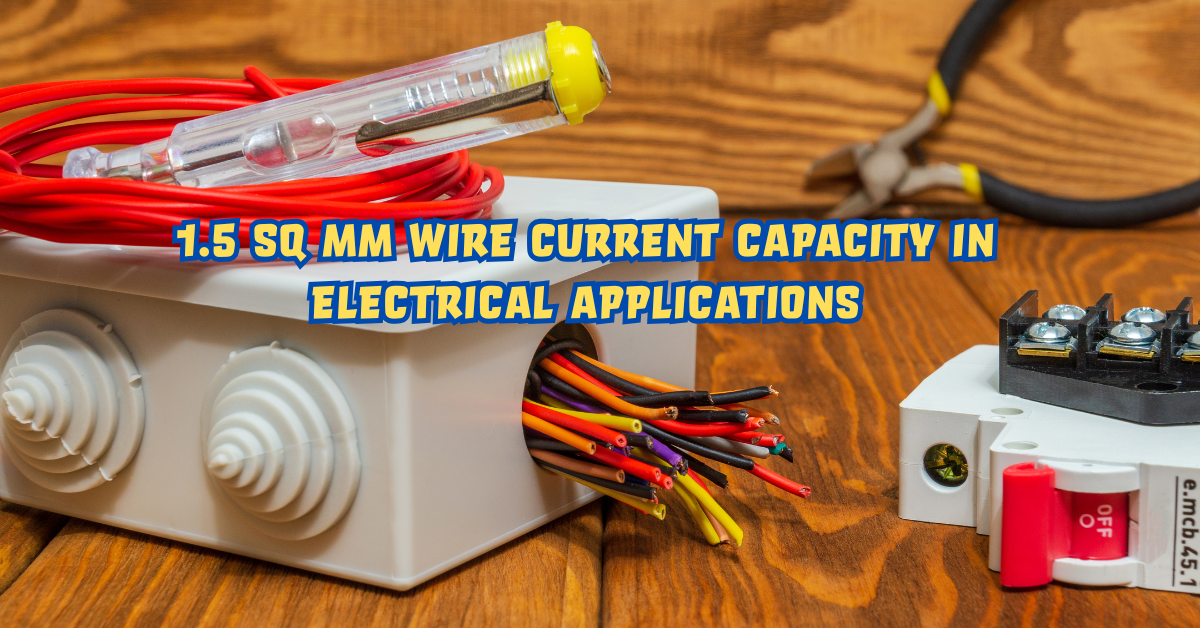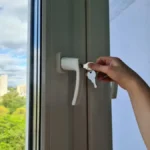The question of 1.5 sq mm wire current capacity often arises among homeowners, electricians, and professionals dealing with electrical installations. The capacity of a wire to carry current is not just a technical concern but also a matter of safety, efficiency, and long-term durability of electrical systems. In simple terms, the current-carrying capacity defines how much electrical load a particular size of wire can safely handle without overheating or risking damage to connected devices. For a 1.5 sq mm copper wire, this value typically ranges between 14 to 18 Amperes under standard conditions, though the exact figure can vary depending on insulation, temperature, and installation method.
This topic is particularly relevant in households and small commercial establishments where 1.5 sq mm wires are commonly used for lighting circuits, fan connections, and sometimes for small appliances. However, many people underestimate or overestimate its capability, leading to misapplications that can cause tripping of circuit breakers, power inefficiency, or even electrical fires. In an era where power demands are increasing and safety regulations are more stringent, understanding the true current capacity of such wires becomes essential.
In this article, we will explore the science behind wire sizing, the actual current rating of a 1.5 sq mm wire, the factors influencing its performance, and practical applications where it is most suited. We will also compare copper and aluminum wires, look into safety standards, and provide practical scenarios with calculations to help readers make informed decisions.
What Does 1.5 Sq mm Wire Represent?
A 1.5 sq mm wire refers to the cross-sectional area of the conductor, measured in square millimeters. It doesn’t refer to the diameter, but the area through which electricity flows. The larger the area, the more electrons can flow, and thus, the greater the current the wire can carry.
In everyday usage, 1.5 sq mm copper wires are the standard choice for residential wiring, particularly for low-power circuits. For example, ceiling lights, LED fittings, and ceiling fans often use this wire size because the loads are relatively low.
Standard Current Capacity of 1.5 Sq mm Wire
The current-carrying capacity of a 1.5 sq mm wire largely depends on material and environmental conditions. Here is a simplified reference:
| Wire Material | Typical Current Capacity | Common Applications |
|---|---|---|
| Copper | 14 – 18 Amperes | Lighting, fans, low-load sockets |
| Aluminum | 10 – 12 Amperes | Temporary setups, lower-cost wiring |
| PVC Insulated | 14 – 16 Amperes | Domestic wiring under conduit |
| Heat Resistant Insulated | 16 – 18 Amperes | High temperature environments |
These values assume normal ambient conditions (around 30°C) and installation within conduits. In open-air wiring, capacity might be slightly higher because heat dissipates more easily.
Factors Affecting Current Capacity
The current a wire can carry safely is influenced by several real-world factors:
- Material of the Conductor: Copper conducts electricity better than aluminum, meaning it carries more current for the same cross-sectional area.
- Ambient Temperature: As the surrounding temperature rises, wires struggle to dissipate heat, lowering their current capacity.
- Installation Method: Wires in conduits carry less current than those in open air due to restricted heat dissipation.
- Insulation Type: Advanced insulation like XLPE allows higher current loads than basic PVC insulation.
- Length of the Wire: Voltage drop across longer lengths reduces efficiency, which indirectly impacts usable current.
Voltage Drop and 1.5 Sq mm Wire
Another crucial factor is voltage drop. For a 1.5 sq mm copper wire, the resistance per meter is approximately 0.0121 ohms. Over longer distances, this resistance causes a drop in voltage, which can be problematic for sensitive devices.
For example, if a fan consumes 2 amps and the wire length is 30 meters, the voltage drop calculation becomes significant:
Voltage Drop = Current × Resistance × Length
= 2 × 0.0121 × 30 = 0.726 Volts
While this seems small, over higher currents or longer lengths, the voltage drop becomes noticeable, affecting performance.
Applications of 1.5 Sq mm Wire
The wire’s primary applications include:
- Lighting Circuits: Ideal for LEDs, tube lights, and bulbs.
- Ceiling Fans: Handles low current draw safely.
- Small Appliances: Devices under 2 kW like exhaust fans or small mixers (with caution).
- Control Circuits: Used in control panels for low-current signaling.
Comparison with Other Wire Sizes
Understanding where 1.5 sq mm wire fits compared to other sizes is crucial.
| Wire Size (sq mm) | Copper Current Capacity (Amperes) | Typical Usage |
|---|---|---|
| 1.0 sq mm | 8 – 10 A | Small LED circuits, low load applications |
| 1.5 sq mm | 14 – 18 A | Fans, lighting, small sockets |
| 2.5 sq mm | 20 – 24 A | Power sockets, kitchen appliances |
| 4.0 sq mm | 28 – 32 A | Air conditioners, geysers |
| 6.0 sq mm | 35 – 40 A | High load appliances, industrial machinery |
This comparison shows why overloading a 1.5 sq mm wire is dangerous. For example, plugging a high-power air conditioner into a circuit designed for lighting can cause wire overheating.
Safety Considerations
The primary safety concern is overheating. When wires carry more current than rated, insulation can melt, leading to short circuits or even fire hazards. To mitigate risks:
- Always pair 1.5 sq mm wires with circuit breakers rated around 10A–16A.
- Avoid using this wire for high-power appliances.
- Ensure proper earthing to prevent shocks.
- Follow national electrical codes (like IS 732 in India) for compliance.
Cost and Availability
1.5 sq mm wires are among the most cost-effective for domestic wiring. Copper wires are more expensive but provide durability and higher efficiency, while aluminum variants are cheaper but less reliable. On average, copper wires cost about 30–40% more than aluminum, but their longer lifespan often justifies the price difference.
Misconceptions About 1.5 Sq mm Wire
Many users believe a 1.5 sq mm wire can handle more load if insulation is good. However, insulation only affects external heat resistance, not the conductor’s ability to carry current. Another myth is that short wire lengths can ignore current capacity. While shorter lengths reduce voltage drop, the wire still cannot exceed its rated ampacity safely.
Practical Scenario
Imagine a household where lighting and fan circuits are powered by 1.5 sq mm wires. Each fan draws around 0.5A, and each light draws 0.2A. If the household runs 10 fans and 20 lights, the total load is about 10 × 0.5 + 20 × 0.2 = 14 Amps. This is already at the upper safe limit of a 1.5 sq mm copper wire, showing why careful load calculation is essential.
Future Trends in Wiring
With the push towards energy-efficient appliances, the demand on circuits is slightly reducing, but safety standards are getting stricter. Manufacturers are introducing flame-retardant and heat-resistant wires, ensuring that even small sizes like 1.5 sq mm can perform reliably under demanding conditions.
Conclusion
The 1.5 sq mm wire current capacity remains an essential reference point in residential and small-scale commercial electrical systems. Its safe range of 14–18 Amperes for copper wires makes it highly reliable for lighting and low-load circuits, provided users adhere to proper safety margins. Overloading such wires not only shortens their lifespan but can also compromise safety. With electricity being an integral part of daily life, understanding these technical details empowers homeowners and electricians to make smarter, safer choices.
As the old saying goes, “Electricity is a good servant but a bad master.” Respecting current capacity limits ensures that this servant remains efficient, reliable, and safe.
FAQs
1. Can a 1.5 sq mm wire run an air conditioner?
No, air conditioners usually require 2.5 sq mm or higher depending on tonnage. Using 1.5 sq mm is unsafe.
2. What is the maximum current a 1.5 sq mm copper wire can carry?
Typically 14–18 Amperes, depending on insulation type and installation conditions.
3. Is aluminum 1.5 sq mm wire safe for home wiring?
It can be used, but copper is preferred due to better conductivity and longer lifespan.
4. Can I use 1.5 sq mm wire for a geyser?
No, geysers usually draw around 15–20 Amps, requiring at least 2.5 sq mm wire.
5. Does length affect the current capacity of a 1.5 sq mm wire?
The capacity remains the same, but longer lengths increase voltage drop, which reduces efficiency.











